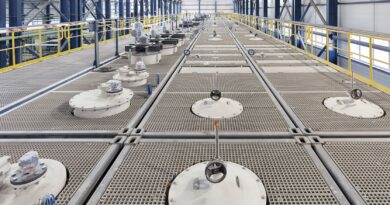Significant reduction of cyanide in refractory gold ore treatment
Traditionally, cyanide consumption with conventional bio-oxidation residues is higher than with residues produced through other oxidative technologies. The MesoTHERM BIOX process, based on Outotec’s proven mesophile BIOX process, offers an easy, cost-effective upgrade path that can cut cyanide consumption by as much as 50% compared to conventional bio-oxidation.
The MesoTHERM BIOX process enhances the established mesophile BIOX process by combining mesophile bio-oxidation technology with a higher-temperature thermophile oxidative stage to enable an even more effective overall sulphide oxidation step.
Reduced cyanide consumption and simplified process operation
MesoTHERM BIOX cuts cyanide consumption by as much as 50% compared to conventional bio-oxidation and significantly reduce the formation of thiocyanate – a common and stable cyanide species traditionally formed as a further by-product. Solubilized species prevalent in the mesophile stage are decanted off in an inter-stage thickening step between the two oxidative processes, simplifying operation of the thermophile stage.
A simple, cost-effective upgrade path
Upgrading to BIOX MesoTHERM is a relatively simple process that involves reconfiguring the circuit with the addition High Rate Thickeners for inter-stage thickening and OKTOP Atmospheric Reactors for the thermophile step.
“Our conventional mesophile BIOX process has enabled the production of over 25 million ounces of gold to date. This novel process takes advantage of these proven technologies to help our customers achieve significant cost savings while also reducing their environmental footprint,” says Craig van Buuren, Senior Process Engineer, Outotec.




